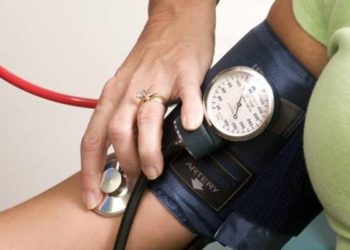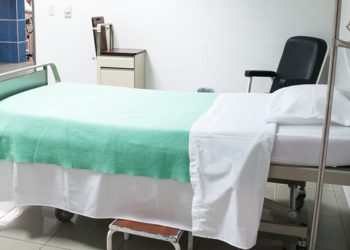The CREOLE trial: amlodipine and either hydrochlorothiazide or perindopril optimally lowers blood pressure in black African patients
1. Black African patients with hypertension randomized to multiple two-drug combinations experienced greater blood pressure control when treated with amlodipine plus either hydrochlorothiazide or perindopril compared to those treated with perindopril plus hydrochlorothiazide.
2. Adverse event rates were similar in all three treatment groups.
Evidence Rating Level: 1 (Excellent)
Study Rundown: Hypertension is the most notable contributor to global disease burden, and blood pressure control can notably reduce morbidity and mortality. To reach blood pressures of less than 140/90 mmHg, duel therapy is often needed. Hypertensive therapies recommended for black African patients differ in the United States and Europe, thus more definitive studies comparing therapeutic options are needed. The Comparison of Three Combination Therapies in Lowering Blood Pressure in Black Africans (CREOLE) trial evaluated various combinations of a calcium-channel blocker (amlodipine), thiazide diuretic (hydrochlorothiazide), and angiotensin-converting–enzyme (ACE) inhibitor (perindopril). The primary end-point of change in 24-hour systolic blood pressure between baseline and after 6 months of treatment showed the use of amlodipine plus either hydrochlorothiazide or perindopril were similarly effective, and more effective than perindopril plus hydrochlorothiazide.
Strengths of the study include its use of 24-hour blood pressure monitoring and evaluation of multiple two-drug therapies, while the study is limited by its lack of statistical adjustment for multiple comparison testing.
Click to read the study in NEJM
Relevant Reading: Physiological phenotyping for personalized therapy of uncontrolled hypertension in Africa
In-Depth [randomized controlled trial]: This randomized controlled trial enrolled patients between June and December 2017 in 6 sub-Saharan African countries. Eligible patients were black, between the ages of 30 and 79, had not received prior hypertensive treatment and had a systolic blood pressure of between 150 and 179 mmHg when seated at an office visit, or when on monotherapy and had a systolic blood pressure of between 140 and 159 mmHg. Patients who were pregnant or with a history of secondary hypertension or cardiovascular disease were excluded from the study. At baseline and after 6 months of treatment, patients had 24-hour blood pressures taken. Randomization into three groups was done in a 1:1:1 manner: 5mg amlodipine plus 12.5mg hydrochlorothiazide daily (n=216), 5mg amlodipine plus 4mg perindopril daily (n=205), or 4mg perindopril plus 12.5mg hydrochlorothiazide daily (n=200). After 2 months, doses were doubled unless patients had unacceptable side effects. The primary end point of mean change in systolic blood pressure between baseline and 6 months was −3.14 mmHg (95% confidence interval [CI], −5.90 to −0.38; P=0.03) for the amlodipine/hydrochlorothiazide group compared to the perindopril/hydrochlorothiazide group. For the amlodipine/perindopril group, the mean change was −3.00 mmHg (95% CI, −5.81 to −0.20 mm Hg; P = 0.04) compared to the perindopril/hydrochlorothiazide group. Reductions in office measured systolic blood pressures were greater in patients receiving amlodipine as well, and the difference was greater than in the 24-hour measurements. Adherence to treatment medications was similar in all three groups, and rates of adverse effects were also similar in all three groups.
Image: PD
©2019 2 Minute Medicine, Inc. All rights reserved. No works may be reproduced without expressed written consent from 2 Minute Medicine, Inc. Inquire about licensing here. No article should be construed as medical advice and is not intended as such by the authors or by 2 Minute Medicine, Inc






